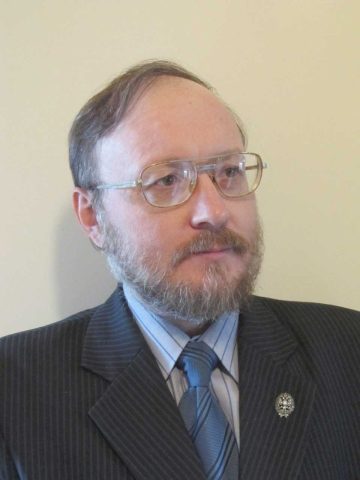The West and the prospects for democracy in Russia

Andrei Val’terovich Grinëv,
Professor,
Department of Social Sciences, Peter the Great St. Petersburg Polytechnic University,
St. Petersburg, Russia
Now the West, led by the United States, perceives Russia and China as its main threat: Russia as a military threat, and China as an economic one. But who is to blame for this situation? Probably the West itself. It was Western investments and technologies that turned communist China into an economic giant in terms of the pace of development, significantly outstripping the countries of Western democracy. The prospects for such a development of the Chinese economy became noticeable back in the 1990s, but instead of pulling Russia, weakened after the collapse of the USSR to their side, Western countries consistently pushed Russia away from themselves in the direction of China. This was the result of the unmeasured greed and political shortsightedness of the ruling Western political and economic elites.
In 1991, the collapse of the Soviet Union gave Russia a chance to become a democratic state, but it was not used for a number of reasons. Unlike the Baltic republics and Poland, economic aid from the West was minimal, and the privatization of former Soviet state property in Russia was overseen by American advisers, many of whom were CIA agents. They were not at all interested in preserving the powerful industrial potential that Russia inherited from the USSR. In just a decade Russia turned from a fairly industrially advanced power into a virtually semi-colony of the West, where the key economic players were representatives of the comprador bourgeoisie in the energy sector (oil, gas) and primary industries under the patronage or with the direct participation of the state bureaucracy. And since the primary means of production was concentrated in the oligarchy or continued to remain with the state, this meant that there was no mass middle class in the country—the social support for any democratic regime. Therefore, it is not surprising that democracy could not take root in post-Soviet Russia: it simply lacked an adequate socioeconomic base here.
At the same time, the West, enriching itself by plundering Russia’s natural resources, consistently turned a blind eye to the violation of democratic principles in the country, when the first Russian President Boris Yeltsin shot the Russian parliament with tanks in 1993 and adopted an anti-democratic Constitution. But this lawless act remained virtually “unnoticed” by the “free” Western press and by Western politicians supporting the observance of democratic norms. It was no coincidence: the option of control over Russia through pro-West assistants and advisers of the incompetent Yeltsin and the hastily created oligarchic elite that privatized a substantial portion of state property seemed too tempting. On the other hand, the formation of a large middle class in the country could entail a reduction in the profits and power of both Russian oligarchs and state officials associated with them through corruption, and Western capital. Neither one nor the other, nor the third did not want such a development of events. Thus the death sentence for democracy in Russia was signed back in the 1990s.
The arrival to power in 2000 of Yeltsin’s successor, the new President Vladimir Putin, only worsened the situation regarding democratic freedoms. The concentration of property and financial resources in the hands of high-ranking officials and the largest oligarchs will always engender an authoritarian regime at best (if the oligarchs are stronger than the officials), and at worst, a totalitarian regime (if the officials are stronger than the oligarchs). In this regard, it is possible to trace the evolution of the share of state property: before the crisis of 1998 it was estimated at about 25% of GDP, by 2013 it exceeded 50%, and currently it is at least 70%, while middle-class property continues to decline, including under the blows of the COVID-19 epidemic. Accordingly, Putin’s soft authoritarianism in the first years of his reign in the early 2000s to the late 2010s began to gradually transform into the totalitarian model, reminiscent of the late Soviet Union (the persecution of dissidents, attacks on freedom of expression, strengthening of regulatory bodies, censorship, militarization, etc.).
It should be noted here that the West had a historic chance to turn the wheel of Russian history towards democracy when the new President Putin, shortly after coming to power, was ready to help deepen economic integration between the European Union and Russia and even join NATO. But all his attempts to establish a dialogue with the West were in vain. The United States absolutely did not want Europe to become the most powerful economic bloc in world history, and the EU countries themselves did not want to spend money on raising the living standards of Russian citizens to the standards of the European Union—they had already spent too much money on the Eastern European states recently admitted to the Union. In the military sphere, the United States did not want to see NATO as a country comparable to it in terms of its nuclear potential, and the Eastern European countries, recently admitted to the alliance, were more suspicious of their huge eastern neighbor. Moreover, the gradual involvement of Ukraine and Georgia in NATO in the 2000s, provoking numerous “color revolutions” in the zone of Russian interests in North Africa, the Middle East, and in the territory of a number of former Soviet republics, finally pushed Putin away from the West and returned Russia to its traditional “besieged fortress” policy. There has been a strategic turn towards China, the results of which the West is beginning to feel in full measure now.
Email: agrinev1960@mail.ru
Expert article 3000
> Back to Baltic Rim Economies 4/2021
To receive the Baltic Rim Economies review free of charge, you may register to the mailing list.
The review is published 4-6 times a year.
